Penn COVID Website Redesign
The COVID website was hard to navigate and find relevant information. As a result, people were uneducated about the testing process and procedures, which led them to become hesitant about getting tested. We made the website more user friendly and made important information easy to find.
Original Website
Two of the biggest issues we found were that the original site had buried links, so users had to scroll and read a lot of text in order to identify the next page they needed to go. The home page also didn’t provide that much relevant information.
Prototyped Website For Future Implementation
We prototyped an updated version of this site. We prioritized the most important items so our suggestions could easily be implemented quickly. We didn’t want to change the fundamental nature of the site and wanted to keep the Penn-branded feel. We updated the COVID testing links to reflect key actions that students wanted: scheduling, viewing test results, understanding what happens when there’s a positive result, and understanding what changes will happen during the spring semester. We also added new banner notifications to make announcements or key changes immediately visible on the page.
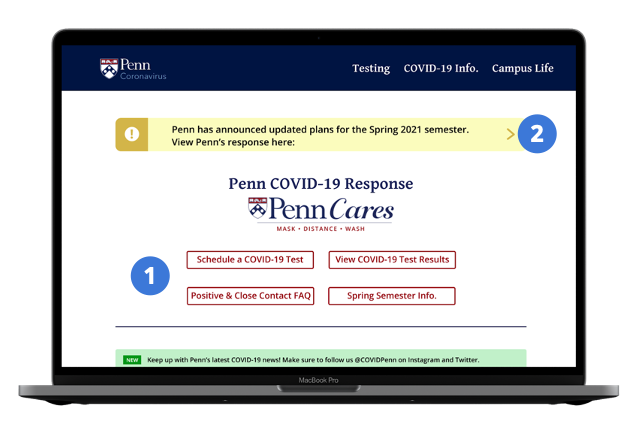
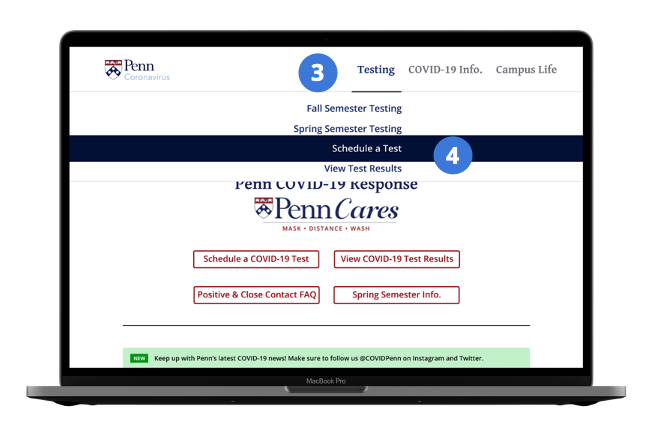

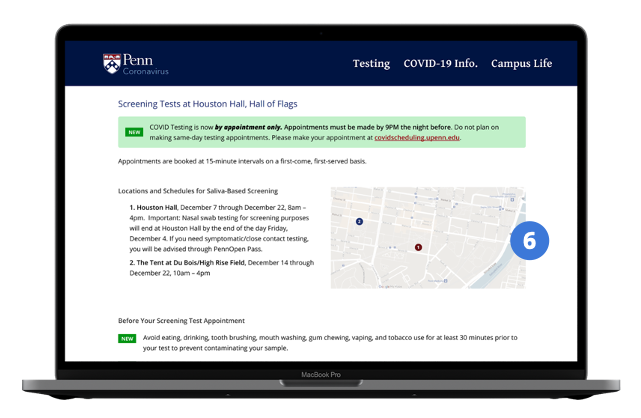
Prototyped Web Site Usability Test Results
About 70% of the students said the new site was easier to use, with a 99.2% success rate for the same tasks we asked them to complete on the original site. The time to complete each task also dropped significantly. We heard that students liked the new navigation and found it a lot easier to find and easily absorb the information they’re looking for.
COVID Saliva Tests and Aromatherapy
As Penn transitioned from nasal swab tests to saliva tests, students needed to learn a new set of rules and despite the testing center improvements, unsurprisingly, the process of dribbling saliva into a tube while standing in the middle of a room was still uncomfortable and awkward for most test takers.
Aromatherapy
We got suggestions from people who referenced scents that act as catalysts for saliva production. This led us to explore using aromatherapy as a solution. We were directed to the Monell Chemical Senses Center. They suggested testing lemon as a sour odorant and peach as a sweet odorant for our prototypes.
Our deployment method needed to be easily handed out and disposed of and we wanted to find a material that had the best scent delivery and preservation properties, so we tested different materials including cotton balls and other various papers, determining that poster board was the cheapest and best option. We also decided that the lemon scent promoted more saliva production.
Aromatherapy Results
After talking to the staff, we learned there was no disruption in their workflow in order to distribute the scent strips, which makes them a viable option. Participants believed that the lemon scent made the room feel safer and more clean and they wanted to continue to use them because it helped them produce saliva faster. We even had a returning test taker ask for the scent strips during one of their subsequent visits. We found that about 70% of students who used the strips said that it helped them generate saliva, and their perceived difficulty of performing the test and the duration of test decreased.
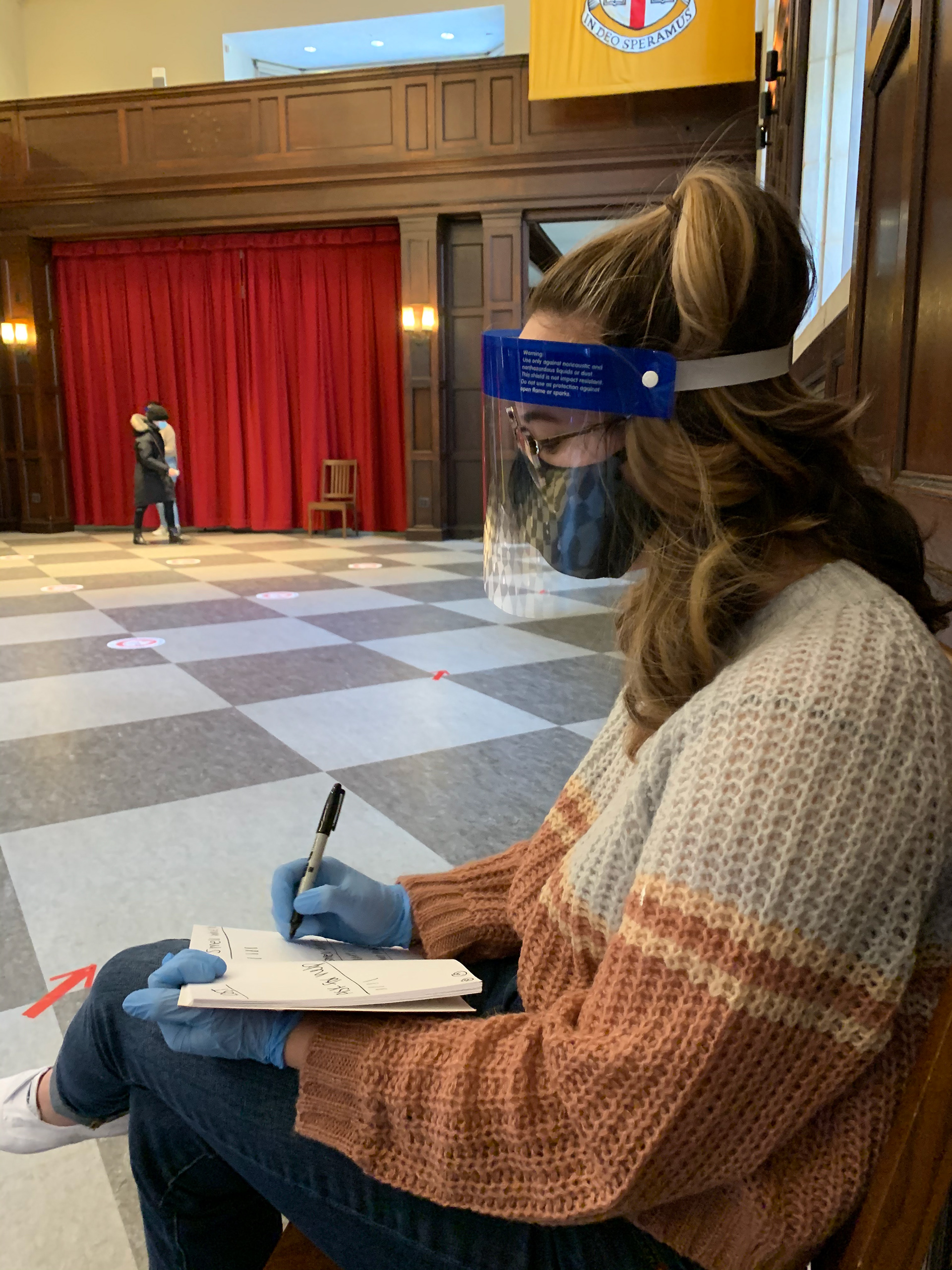

Other Solutions
Besides redesigning the covid website and implementing aromatherapy at testing sites, we worked on 3 other solutions addressing the information gathering problems. These would work alongside the new website to provide students needed information. We encountered testing constraints, but these prototypes can still be used by our client in other ways.
The first solution consists of two text reminders. One being sent a day in advance to help student confirm their appointment and another an hour before their scheduled test to prepare them for saliva test specific requirements such as no eating or drinking 30 min before the test. Due to technology, privacy and consent constraints, we weren’t able to test this prototype.
We created signs to help students before and during their saliva tests. Due to the change of the testing site layout and since the new requirement of appointments eliminated the waiting line, we weren’t able test these as planned. However, these signs are already implements as prints displayed at the check in table in Houston Hall.
We designed 2 infographics to explain what happens if a student were to test positive or become exposed to COVID to address some misconceptions. Tests were run on 9 infrequent testers and the results weren’t statistically significant. However, students did prefer the infographics over the Trace and Isolate FAQ webpage.
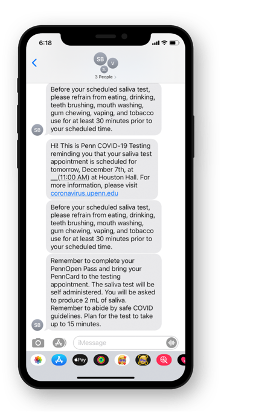
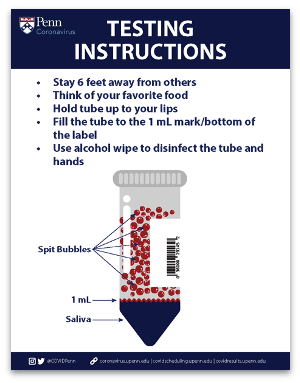


Lessons Learned
COIVD is a fast evolving issue. From the start of our project to the end, we had to adapt many times based on the changes that were implemented across campus, testing site changes and the fundamental evolution of the virus itself. Being flexible and patient in a constantly changing environment is a quality that we needed for this project. In response to the devastating effects the virus has had on our community, all of the experts, students and faculty that we reached out to were very responsive, generous and helpful sharing their collective knowledge with us. The reinforcement of reaching out to people who may be able to help for advice has been apparent during this project. Having a bias toward action in terms of talking to interesting people has been something that I learned years ago. This project confirmed the positive outcome that those reach out communications can have.
Projects become easier and more fun when you work with a great team. Most of the projects that I've worked on have been solo projects, making it hard to obtain constructive feedback. Working with Rachel, Vashvi and Zining was a pleasure. I enjoyed being part of such a positive, intelligent and creative group. Our ideas and final deliverables became better because of the diverse expertise of each group member. Friendships and relationships are powerful and are something I value significantly. I was happy to build great friendships with such a great group of women.